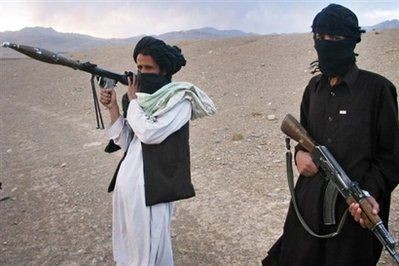OSH, Kyrgyzstan (TCA) — In Afghanistan, the Taliban has regained a foothold and launched the spring offensive codenamed “operation Omari,” after the name of its late leader Mullah Muhammad Omar. This will certainly nullify the peace efforts of the quadrilateral coordination group of China, the US, Pakistan and Afghanistan for reaching a direct dialogue between Kabul and the Taliban. The spring offensive will certainly escalate violence and further destabilize the country. Such development on the ground, with the Afghan government’s role in state management reduced by ever intensive fighting, may turn foreign intervention from a last option into the only option. With Afghanistan falling again into chaos, terrorism may spread to neighboring countries of Central Asia and probably China’s western Xinjiang region.
Against Central Asia and Russia
In mid-April, a U.S. army spokesman by the name of brigadier general Charles Cleveland was quoted in a report by the Voice of America, which usually voices Washington’s official points of view, as downplaying the role of Daesh in Afghanistan. According to the newsreel, the U.S. military estimates there are between 1,000 and 3,000 IS fighters left in Afghanistan, though Cleveland said the actual number is “probably on the lower end of that,” referring to Daesh as Islamic State.
A different version of the story was given only days later through Russia Today and Sputnik News by Zamir Kabulov, the head of the Asia and Middle East department of the Russian foreign ministry, who also serves as special envoy of the Russian president to Afghanistan. “There are now 10,000 IS fighters in Afghanistan. A year ago there were a hundred. This growth over a year is spectacular. The Afghan branch of IS is definitely specialised against Central Asia. Russian is even one of their working languages. They are being trained against Central Asia and Russia,” the official was quoted by Russian media as declaring.
According to news agency Tass, Kabulov also said: “When the Taliban were included in the so-called Russian sanctions list after being blacklisted by the U.N. Security Council, we started regarding them to be a terrorist organization and we had every ground to do that. If the Taliban are ready to meet the three national reconciliation conditions – the recognition of Afghanistan’s constitution; cessation of military hostilities and the abruption of ties with extremist organisations, then we will no longer have grounds to consider them to be a terrorist organisation.”
Confining terrorist action in Afghanistan
Both superpowers appear to think that with the Taliban confined to Afghanistan by depriving them of its two allies’ support will avert the danger for the three former Soviet republics of Tajikistan, Uzbekistan and Turkmenistan and beyond. The border between the former USSR and Afghanistan should thereby become a new Rubicon neither party is supposed to cross – at least that is what Moscow and Washington seem to hope for.
From the above it appears that for both Russia and America, disarming and dismantling the Taliban no longer seems to be the absolute goal. Taming the movement and instead concentrating on Daesh and Al-Qaeda seems to be the new name of the game. Regretfully the latest bomb attack in Kabul and the announcement by the Taliban of the beginning of the spring offensive with large scale attacks and the use of suicide terrorists in various urban areas illustrates once again that those assumptions belong to the realm of fantasy.
The Afghan coalition government, already fragile and divided itself, is losing grip and ground by the day. It is less and less in a position to drive Daesh and Al-Qaeda out – certainly not while the Taliban remains a wild card in the geopolitical game which it is and will always remain.
Central Asia terrorist infiltration
The infiltration of Daesh in Central Asia is certainly a fact that needs to be watched and that is already alarming different governments.
“ISIL activists have already infiltrated Central Asian countries. In Tajikistan and Uzbekistan, there were cases of open demonstration of ISIL’s flags on the main streets of Dushanbe and Tashkent. These cases confirm the increase in ISIL’s spread in other countries of the region,” Kuban Abdymen, the director of Kyrgyzstan’s state news agency Kabar wrote in an analytical comment posted on March 29 this year. “Media claim there is already a number of fighters who are waiting for the right time to strike. The National Security Service of Kyrgyzstan believes that the terrorist threats come primarily from outside.”
On March 29 this year, Kyrgyzstan’s State Committee for National Security (GKNB) announced yet one more “preventive action” against terrorist cells in the country. A group of seven people had been arrested in connection with the suspicion that it was “engaged in recruitment for combat activities in war zones”.
In Tajikistan, the nomenclature of the alleged fifth-columnists keen on overthrowing the government includes four Tajik citizens named Ilyos Malaboyev, D. Tohirov, Abdurasul Ahmadov and A. Sattarov, the latter being an imam at the Abuzari Ghifori mosque in the Jabbar Rasulov district, in the northern province of Sughd. Chief prosecutor Yusuf Rahmon claims that Malaboyev has been the main recruiter for some time, exhorting young people not to “fight” in the Near-East but rather to fill the ranks of “fighters” inside Tajikistan, led by compatriots who did receive their training and experience in Syria and Iraq.
Less is known about recent developments in Kazakhstan, but it is generally assumed that they fit into the overall trend, also visible in Europe. The gradual advanced formation of small terror cells, mostly consisting of nationals of the countries in which they operate, some of which just use the Daesh/IS label while others are more closely connected with it.



